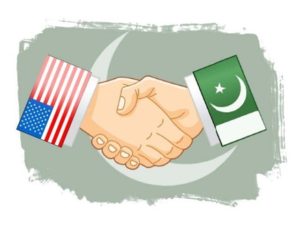Setting and Population Density Pattern.
- Afghanistan’s overall population density is only about 148 people per square mile / 57 people per square kilometer (Indian population density is 1202 per square mile / 464 per square kilometer).
- Even in the populated areas of Afghanistan, people are quite spread out, with only 26 percent of the population living in urban centres. This dispersed population pattern, is a challenge for the state army to defend while, it favours the Taliban’s quick-moving offensive.
Taliban Strategy.
- Following the withdrawal of Western forces, the Taliban swiftly and easily occupied vast swaths of sparsely populated territory. They then used that territory to launch coordinated and fast-moving offensives.
- Instead of traditional tools of warfare (like artillery and armour), the Taliban moved quickly in weaponised pickup trucks to defeat dug-in defensive They forced The Afghan forces to retreat from outposts and checkpoints to (safety of) urban areas, thereby ceding control of supply lines and major highways. This allowed Taliban forces to surround and isolate urban centers.
- Local officials were quick to accept Taliban control because they had little allegiance to the central government and knew that Afghan forces were unwilling (and unable) to defend their areas from Taliban
Taliban Advantages.
- Taliban enjoyed a presence throughout the country, allowing them to pressure the Afghan National Defense and Security Forces in multiple locations.
- The Taliban were able to conduct lightning offensives across many fronts, which fatally stressed the limited cohesion of the Afghan National Defense and Security.
Afghan Security Force: Challenges
- Low force-to-space ratios meant that defenders had significant ground to cover and had to move swiftly and in a coordinated fashion to stand any chance of successfully countering Taliban threats from many The Afghan security forces were not geared up to these tasks.
- The Afghan military lacked the capacity and cohesion required to stand firm and defend against fast-moving offensives across many fronts.
- Afghan forces had always been heavily dependent on S. air support for troop movement, re-supply, and combat operations. In absence of the air support, the Afghan military was unable to regroup or move units around quickly.
- Afghan forces were hampered by lack of cohesion, leadership, motivation, and limited training & mobility.
Outcome.
- The weaknesses of the Afghan security forces, combined with the low force-to-space ratios generated by Afghanistan’s terrain and its population distribution, made a quick Taliban victory a reality.
- Taliban rarely had to use force because they could leverage their geographic reach to intimidate local leaders and convince defenders to flee or surrender.
Lessons
- Understanding Local conditions is Important.
- One solution does not work for every problem.
- Psychological (Mind) factor of any armed is important.
- Besides Equipment and training, motivation and leadership is equally important.
There is much more to it – More coming up
Questions
Has the western world really understood Afghanistan?
Is the fight against terrorism being orchestrated correctly?
Titbit
Afghanistan is called graveyard of empires.
Britishers came and failed
Russians tried and failed.
Yanks tried for long and failed.
Random Thoughts
Now it is Chinese turn
(Chinese are too smart to burn their hands – they will let Pakistan do Their dirty work)
Pakistan is playing with a two edged sword.
will the nurtured snake bite back
Suggestions and Value additions are most welcome
For regular updates, please register here
https://55nda.com/blogs/anil-khosla/subscribe/
References
https://www.independent.co.uk/voices/afghanistan-taliban-uk-war-troops-b1902270.html
https://www.foreignaffairs.com/articles/united-states/2021-08-17/why-taliban-won
https://www.wsj.com/articles/afghanistan-army-collapse-taliban-11628958253

